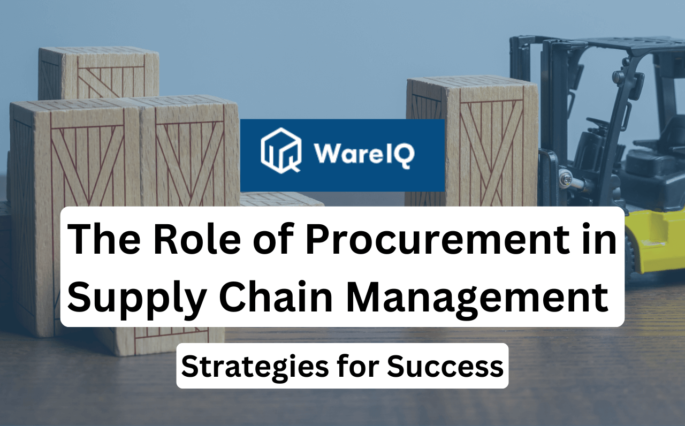Behind the Shelves: Navigating the World of Merchandise Inventory


The term “merchandise inventory” refers to the products that retailers, wholesalers, and distributors acquire from producers or other suppliers in order to merchandize, or advertise and sell, to consumers. The worth of the products that a retailer or other reseller wants to sell to customers is shown in their inventory of goods. It contains all of the company’s inventory, which is kept in warehouses, retail outlets, and storage facilities.
All items that have been bought but not yet sold are included in the merchandise inventory. On a company’s balance sheet, this unsold inventory is classed as a current asset. Merchandise inventory matches the definition of current assets since it is often desired by businesses to sell inventory within a year through regular business activities. Current assets are assets that the firm plans to sell or use within a year. The cost of transportation and insurance, as well as the price paid to suppliers, are included in the value of the inventory of goods.
- Merchandising Inventory Methods
- Importance of Merchandise Inventory
- How to calculate merchandise inventory
- Conclusion
- FAQs
- What is merchandise inventory?
- Why is merchandise inventory considered a current asset?
- What costs are included in merchandise inventory?
- What's the difference between perpetual and periodic merchandising inventory methods?
- How does perpetual inventory work?
- What are the advantages of periodic inventory?
- Do companies need to purchase additional software for periodic inventory?
- What is the formula to calculate the beginning merchandise inventory?
- How is merchandise inventory calculated?
- Why is inventory turnover important?
Merchandising Inventory Methods
Perpetual Merchandising Inventory
- The perpetual merchandising inventory technique keeps track of the amount and cost of your goods inventory on a continuous basis. The balance is changed each time stock is added or deleted.
- Without automation, perpetual inventory is practically hard to accomplish unless your company sells a small number of expensive things infrequently, like a car dealership.
- Nevertheless, automating your inventory by utilising inventory management strategies is the simplest approach to creating permanent merchandising inventory. Software for inventory management is a part of this.
- The majority of perpetual inventory systems track purchases using a point-of-sale computer system.
- The system automatically modifies the stock amount available to reflect a customer’s purchase when they make a purchase of a product.
- Employees have access to the system’s whole inventory, which aids the business in preventing empty shelves and back-ordered merchandise.
- Although perpetual inventory offers a very accurate inventory count, it does not take into account lost or stolen products.
- Employees should do a physical inventory count on a regular basis, even when utilising a perpetual inventory system, to update figures to reflect any broken, damaged, or missing goods.
Periodic Merchandising Inventory
- A continual count of inventory quantity and value is not kept using the periodic merchandising inventory approach.
- An inventory is instead taken at predetermined times. The outcomes of two inventories are compared to ascertain changes in merchandising inventory.
- The simplicity, low cost, and personnel requirements of a periodic inventory system are advantages.
- Because it’s simple to integrate and manage, a periodic inventory system might be perfect for small firms with limited inventory choices.
- This kind of system may be very effective for organisations that fit these requirements as doing frequent physical counts requires less time when there is a small inventory.
- Small firms could choose a periodic inventory system over a perpetual inventory system since it may be easier to set up and maintain.
- Financial experts don’t need to buy or set up any new software in order to integrate a periodic inventory system into their present ledger. Because of this, integrating the periodic system is simple and less expensive than buying accounting software to track inventories.
- The periodic inventory system may be used by a company with staff as well. The only staff needed to use this method is a team member from the business to do the physical count and a worker to enter and compute the general ledger entries.
Importance of Merchandise Inventory
| Aspect | Description | Impact |
| Merchandise Inventory | Includes product purchase costs, shipping costs, transit insurance, and packaging expenses.Represents goods in warehouses, stores, and those in transit from suppliers. | Affects current assets on the balance sheet.Doesn’t directly appear on the income statement. |
| Accounting Process | Retailer records product cost in merchandise inventory until goods are sold.COGS deduction from merchandise inventory impacts gross profit calculation. | When sold, the cost moves to the Cost of Goods Sold (COGS).Directly influences profit measurement. |
| Inventory Turnover | Reflects how quickly a company sells and replaces its inventory during a period.Useful for pricing, promotions, supplier management, and more.Varies by industry; grocery and fast-fashion have higher turnover, and luxury retailers have lower. | Calculated as COGS divided by average inventory.High turnover indicates better liquidity. |
How to calculate merchandise inventory
Gather Data
To execute goods inventory estimates, start by acquiring the necessary information. The cost of goods sold (COGS) and the quantity of acquired inventory are included in this data. Usually, you can find this data on the income statement or balance sheet of a business. Look for this information in the COGS section.
Determine the beginning merchandise inventory
You may calculate the initial merchandise inventory using this information. This calculation displays the inventory value of a business at the start of an accounting period. To get the starting inventory value, use this formula:
Beginning inventory = (ending inventory + COGS) – purchased inventory
Perform the merchandise inventory calculation
Calculate the goods inventory after you are aware of the starting stock. This calculation displays the inventory of a business less the cost of items sold over the same time frame. The following formula can be used to determine the final merchandise inventory:
Merchandise inventory = (beginning inventory + purchased inventory) – COGS
Conclusion
The term “merchandise inventory” refers to the products that retailers, wholesalers, and distributors acquire from producers or other suppliers in order to merchandize, or advertise and sell, to consumers. Current assets are assets that the firm plans to sell or use within a year. The cost of transportation and insurance, as well as the price paid to suppliers, are included in the value of the inventory of goods. Although perpetual inventory offers a very accurate inventory count, it does not take into account lost or stolen products. The outcomes of two inventories are compared to ascertain changes in merchandising inventory.
FAQs
What is merchandise inventory?
Merchandise inventory refers to products that retailers acquire from suppliers for the purpose of selling to consumers.
Why is merchandise inventory considered a current asset?
It’s classified as a current asset because businesses intend to sell this inventory within a year through regular operations.
What costs are included in merchandise inventory?
Merchandise inventory includes the purchase price, shipping costs, transit insurance, and packaging expenses.
What’s the difference between perpetual and periodic merchandising inventory methods?
Perpetual inventory is continuously updated, while periodic inventory is taken at specific times, making it simpler but less real-time.
How does perpetual inventory work?
Perpetual inventory systems track changes in inventory in real-time, often with the help of point-of-sale computer systems.
What are the advantages of periodic inventory?
Periodic inventory is simpler, cost-effective, and requires less personnel. It’s suitable for small businesses with limited inventory.
Do companies need to purchase additional software for periodic inventory?
No, periodic inventory can be integrated into existing ledger systems without the need for new software.
What is the formula to calculate the beginning merchandise inventory?
Beginning inventory = (ending inventory + COGS) – purchased inventory.
How is merchandise inventory calculated?
Merchandise inventory = (beginning inventory + purchased inventory) – COGS.
Why is inventory turnover important?
Inventory turnover reflects how quickly a company sells and replenishes its inventory, impacting pricing, promotions, and overall financial health. High turnover often indicates better liquidity.








